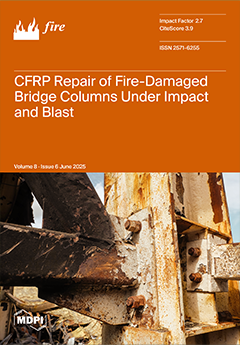The growing complexity and risk profile of fire and emergency incidents necessitate advanced training methodologies that go beyond traditional approaches. Live-fire drills and classroom-based instruction, while foundational, often fall short in providing safe, repeatable, and scalable training environments that accurately reflect the dynamic
[...] Read more.
The growing complexity and risk profile of fire and emergency incidents necessitate advanced training methodologies that go beyond traditional approaches. Live-fire drills and classroom-based instruction, while foundational, often fall short in providing safe, repeatable, and scalable training environments that accurately reflect the dynamic nature of real-world emergencies. Recent advancements in immersive technologies, including virtual reality (VR), augmented reality (AR), mixed reality (MR), extended reality (XR), and simulation-based systems, offer promising alternatives to address these challenges. This review provides a comprehensive overview of the integration of VR, AR, MR, XR, and simulation technologies into firefighter and incident commander training. It examines current practices across fire services and emergency response agencies, highlighting the capabilities of immersive and interactive platforms to enhance operational readiness, decision-making, situational awareness, and team coordination. This paper analyzes the benefits of these technologies, such as increased safety, cost-efficiency, data-driven performance assessment, and personalized learning pathways, while also identifying persistent challenges, including technological limitations, realism gaps, and cultural barriers to adoption. Emerging trends, such as AI-enhanced scenario generation, biometric feedback integration, and cloud-based collaborative environments, are discussed as future directions that may further revolutionize fire service education. This review aims to support researchers, training developers, and emergency service stakeholders in understanding the evolving landscape of digital training solutions, with the goal of fostering more resilient, adaptive, and effective emergency response systems.
Full article





